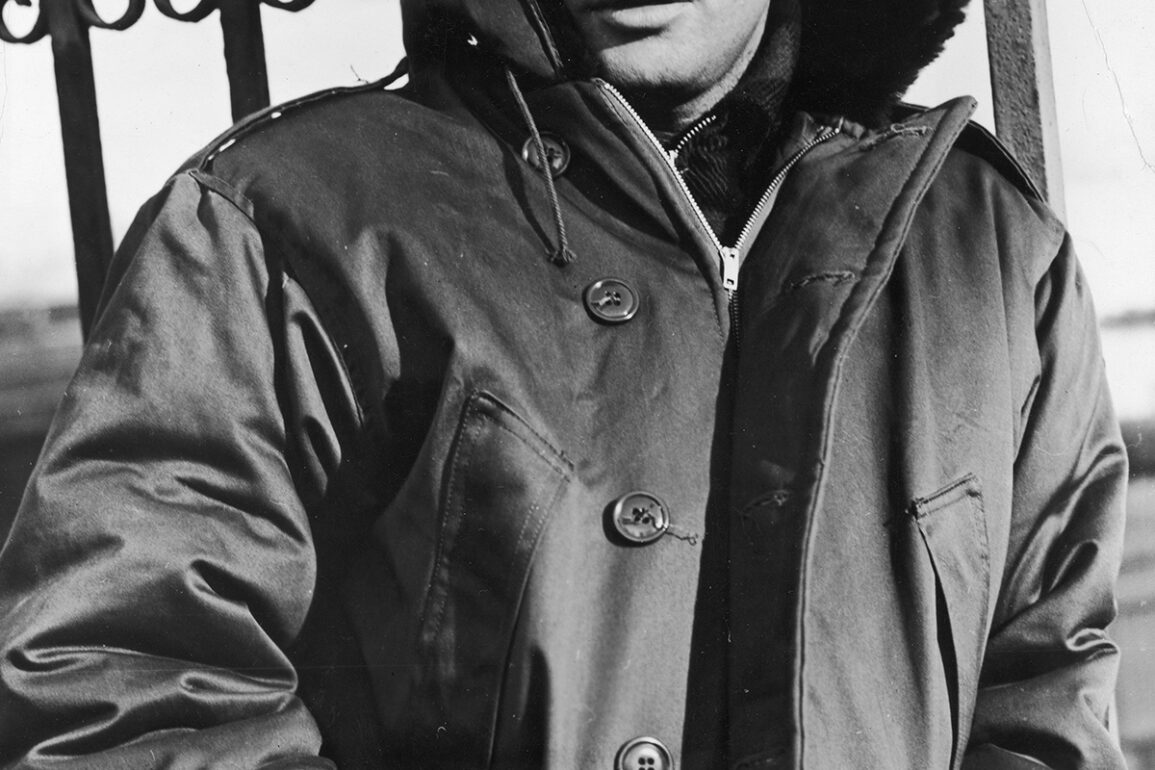The Alpha Industries x Highsnobiety collection releases November 29, including two N-3B parka coats. The collection will be available from the Highsnobiety Shop and iOS app.
When wanting to create a coat that can survive freezing cold weather, there are few better places to look for inspiration than the native communities of the Arctic.
Carefully handstitched using parts from various animals, from reindeer fur to fish skin, the parka in its original form was worn by indigenous people of the harshest environments — and continues to be today. Defined by their large fluffy hoods, commonly made using wolverine fur for its water-wicking abilities, they differ in decoration and construction across different groups such as the Nenets in Northwest Siberia or the Caribou Inuits in North America and Greenland.
It’s these pieces of clothing that caught the attention of the U.S. military in the ’50s and led to the creation of the green-colored, furry-hooded coats that we all recognize today.
The parka has a similar story to other iconic military outerwear styles like the trench coat or MA-1 bomber: it was adopted by military surplus raiding subcultures, turned into a canvas for experimentation by high fashion designers, and later became a staple in contemporary wardrobes.
Below, we tell the tale of an iconic design that’s forever indebted to the native communities living in the Arctic Circle — going from freezing battlefields to being used by Raf Simons to create fashion history.
How The Parka Became Military Wear
“There isn’t a documented piece of evidence of where it came from. However, during World War II, the U.S. military was stationed in places like the Arctic as well as Alaska, which are two locations where there were Intuit Indigenous People living at that time,” says Matt Pantoja, Chief Brand Officer for Alpha Industries, which was a manufacturer of parkas for the U.S. Military.
Having realized that its leather outerwear selection (despite looking the part) was not fit for purpose in sub-minus weather, the American military developed its N series of coats which birthed the modern parka.
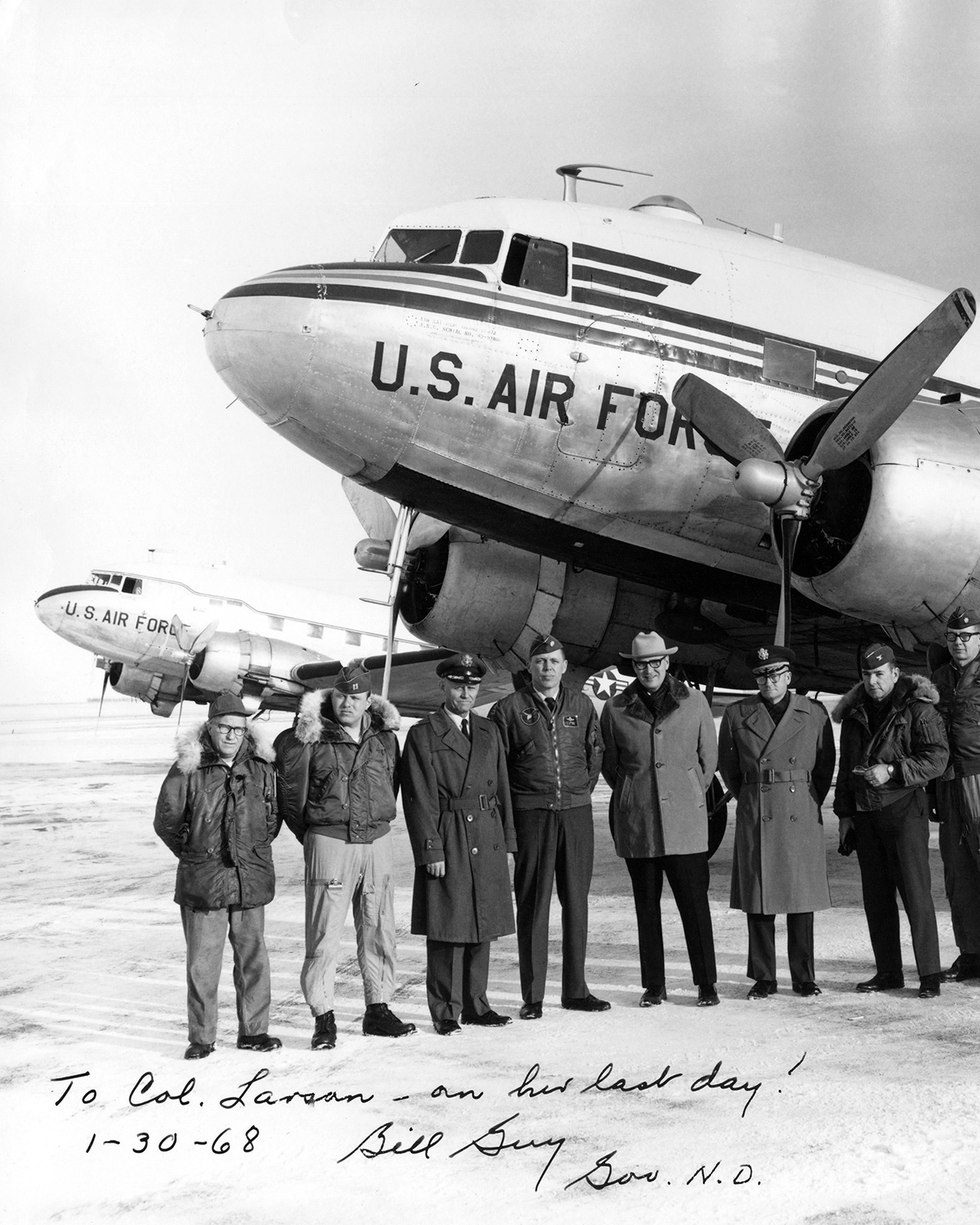



Made with a wool lining and nylon twill shell, the N-3B was a mid-length, fur-hooded parka that closely resembles those that we know today. “For every that parka comes out, the N-3B is the godfather,” says Pantoja. “It remains unchanged. If you look at most parkas today, they take pages from this old-school military design and then innovate from there.”
It remains unchanged. If you look at most parkas today, they take pages from this old-school military design and then innovate from there.
Matt Pantoja
Made for the Air Force as an upgrade from the original N-3 parka, it received small adjustments over the years but the core formula changed relatively little over the years — a testament to its functionality.




It wasn’t until the Korean War that the parka received a significant aesthetic change, introducing the fishtail parka or, to give it its official military name, the M-51. This update was created for optimum warmth and mobility in the treacherous conditions that the Korean winter threw at soldiers. This time, the style was improved through a waterproof outer shell, removable liner, and a split hem that gave it the nickname fishtail parka — designed for freedom of movement and to be tied around each leg to trap heat.
It’s this style of parka that started to gain fame elsewhere in the ’60s, as it popped up in army surplus stores while one of the most fashionable subcultures to date was being birthed across the pond, in England.
Mods, Britpop, and More Great British Subcultures
Blazers could only include three buttons, pants were to be slim-fitting, the collars on shirts had to be buttoned down… Mods had a very specific way of dressing and an essential part of their smart ensemble was parka coats.
Created by working-class communities in ’60s London, Mods are a British subculture known for riding on Vespa and Lambretta scooters, listening to modern jazz music, fighting against rockers, and wearing M-51s. “Usually, only the shell was worn to protect one’s going out finery from road dirt and the elements. It came off as soon as you reached where you were heading,” writes author John Knight on the blog Mods Of Your Generation, going on to say: “Mod was about peacocking, not looking like a GI from the Korean War.”




While the first batch of ’60s Mods only wore parkas to protect their suits, its many re-incarnations over the years solidified it in British culture. The revivalists in the late ’70s and early ‘80s brought the parka back to the fore, having seen photos of Mods zipping around on their scooters wearing the outerwear style.
“After the punk thing had happened, two-tone music suddenly exploded and people were dressing a little bit Mod-ish. Mod had this kind of revival through Ska music in the late ’70s,” David Keyte, founder of the brand Universal Works, tells Highsnobiety. “I saw some of the kids around my estate who wanted to be two-tone Mods wearing parkas. There were people on scooters in Oxfam suits and parkas thinking they were in Quadrophenia.”
The cover of the album Quadrophenia (1973) by The Who sees a Mod sitting on an Italian scooter, back turned to the camera, showcasing the band’s name printed on the back of his parka coat; but it was the later released film of the same name that embedded the style into the history books. Following a group of rowdy, parka-clad Londoners on a trip down to Brighton to meet with (and fight against) their rivals, the Rockers, the film came to define Mod culture.
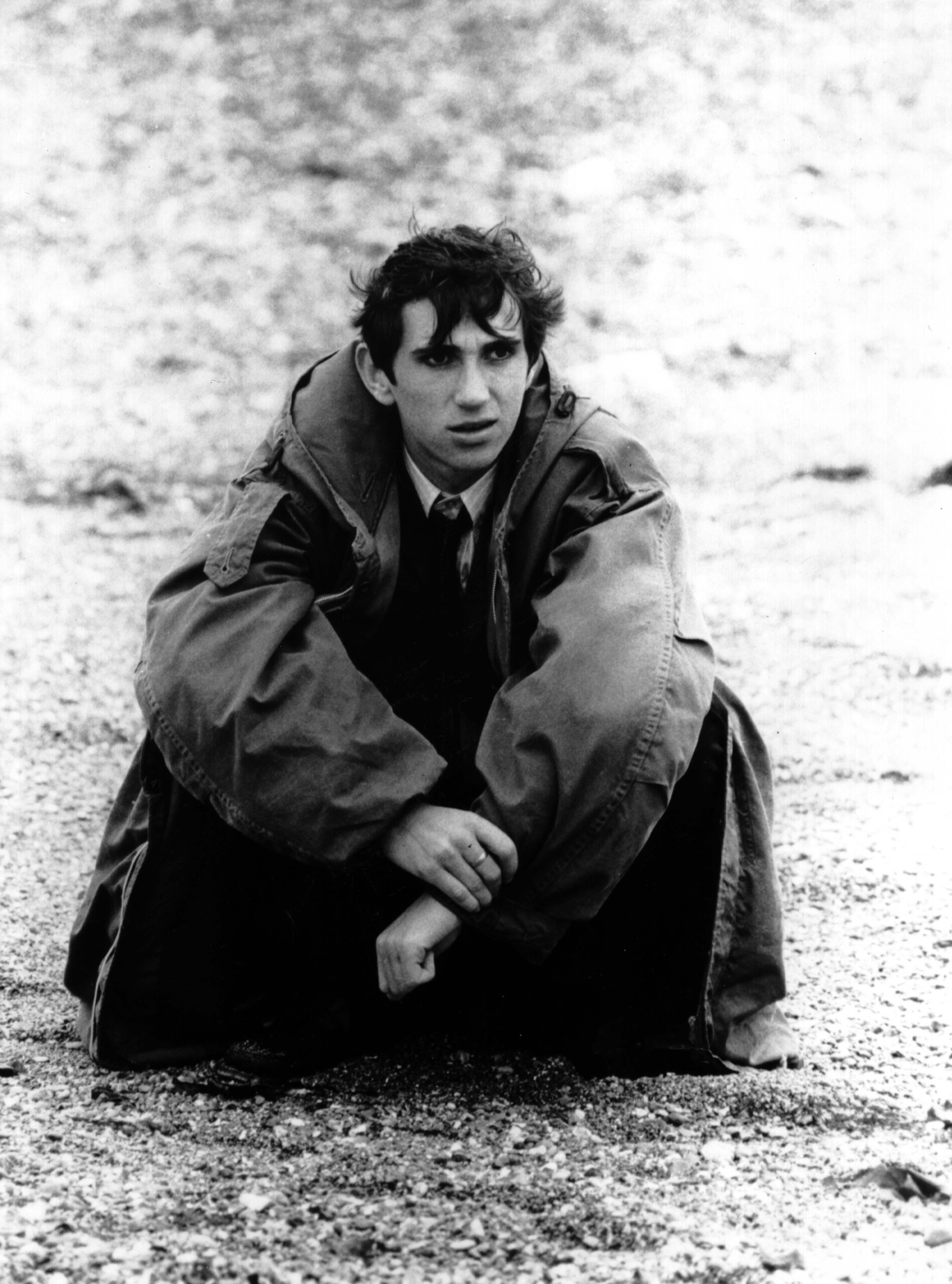



After the second coming of Mods, it developed into a range of different offshoots: football casuals, northern soul, skinheads… some of England’s most famous subcultures can be traced back to Mods. However, it was the Gallagher brothers who really kept its parka coats alive.
[Parka coats] put you into a community, a tribe, and people wanted to be part of it. I think that cemented the hooded coat.
David Keyte
Noel and Liam Gallagher, the brothers behind Oasis (or the “poet” and “town crier” as a young Pete Doherty called them) are the poster boys of Britpop: the mid-90s golden era of British guitar music.
“It’s not just the fact that the music was exciting during Britpop, but Oasis and those Manchester bands all had similar haircuts, a similar sound, and a similar look,” says Keyte. “It put you into a community, a tribe, and people wanted to be part of it. I think that cemented the hooded coat.”
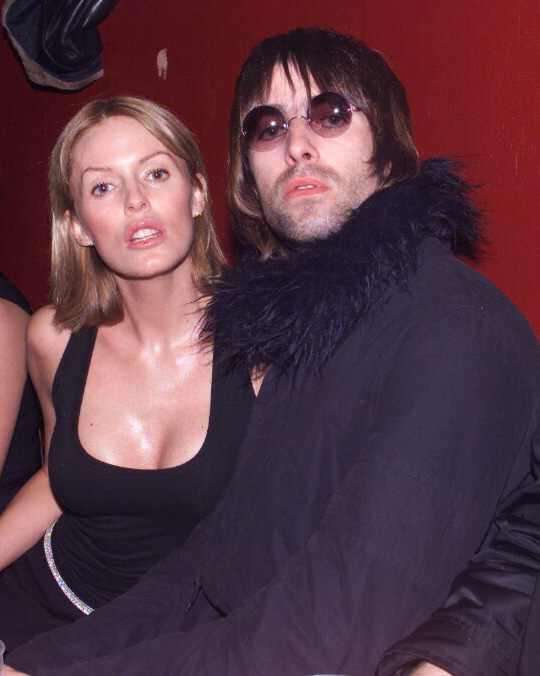



The long-length, fishtail outerwear was a defining style of that ’90s era where English bands were topping the charts worldwide — and it went far beyond the original, army-spec M-51s. By this time, high fashion brands were starting to get in on the act, producing what are today considered menswear grails.
From Helmut Lang to Baby Phat, The Parka Gets Remodelled
The late ’90s was a breakout time for Helmut Lang for many reasons. It’s when the brand made its permanent mark on the fashion industry, releasing its most famous pieces such as paint-splatter jeans, silver Astro jackets, and ballistic vests.
Meanwhile, its winter collections saw one of fashion’s great minimalist designers producing a range of military-inspired parkas. The Austrian designer continually created many new takes on the full-length coat in those iconic late ’90s collections, including the grail that is the Winter 1999 Astro Parka which Liam Gallagher can be seen wearing above.
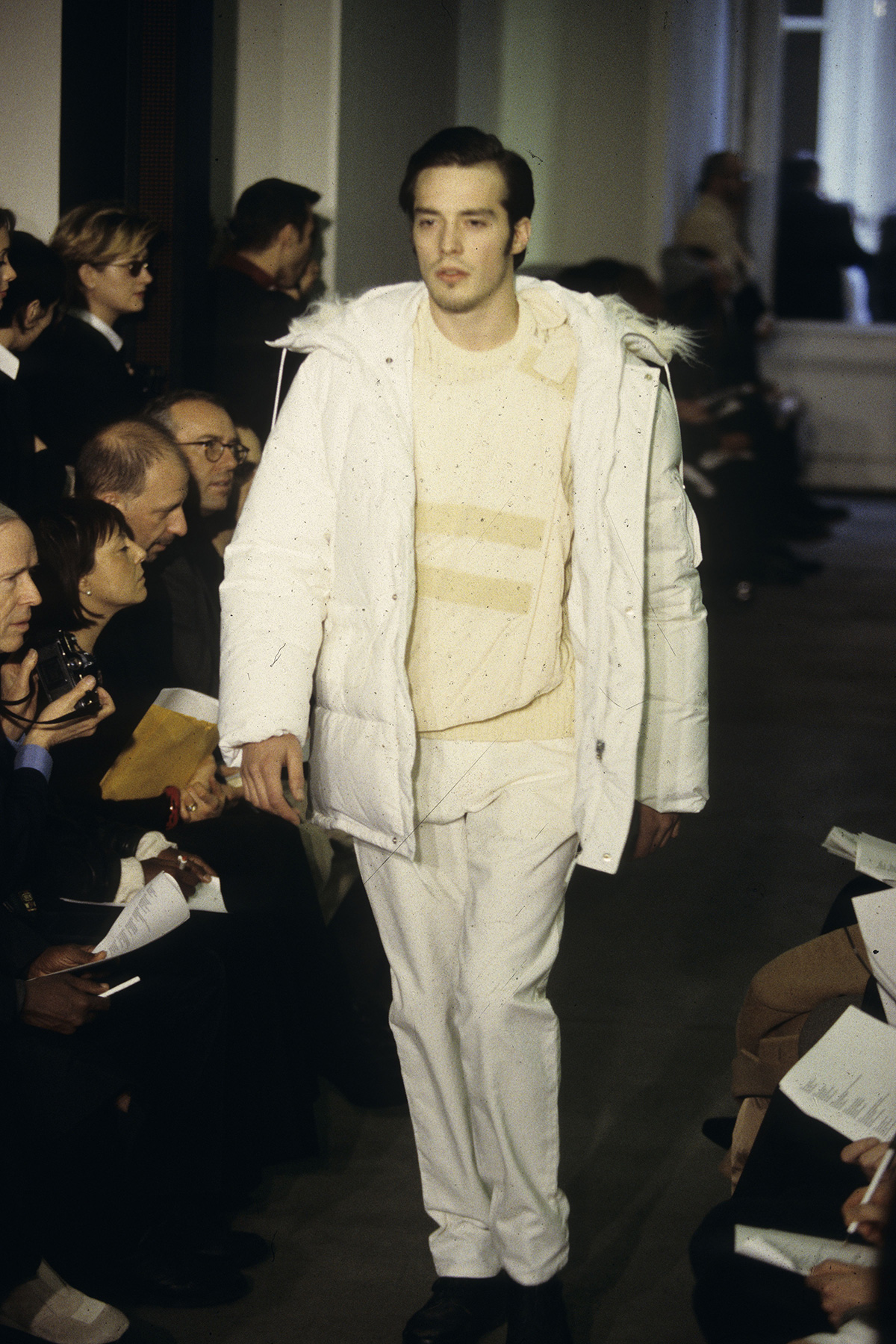



Helmut Lang brought the parka into the 21st century through the lens of high fashion and then, at the start of the new century, the parka had its biggest moment on the runway to date. A selection of four coats (three of which have since gone on sale as a collection for a cool $20k) Raf Simons’ AW03 parka coats are a piece of fashion history.
Created together with graphic designer Peter Saville, the fishtail parkas plaster artwork from British bands New Order and Joy Division onto the back of the coats, a possible reference to the aforementioned Quadrophenia (1973) album cover — “it’s one of the best versions of a parka that I’ve seen, without doubt,” says Keyte.
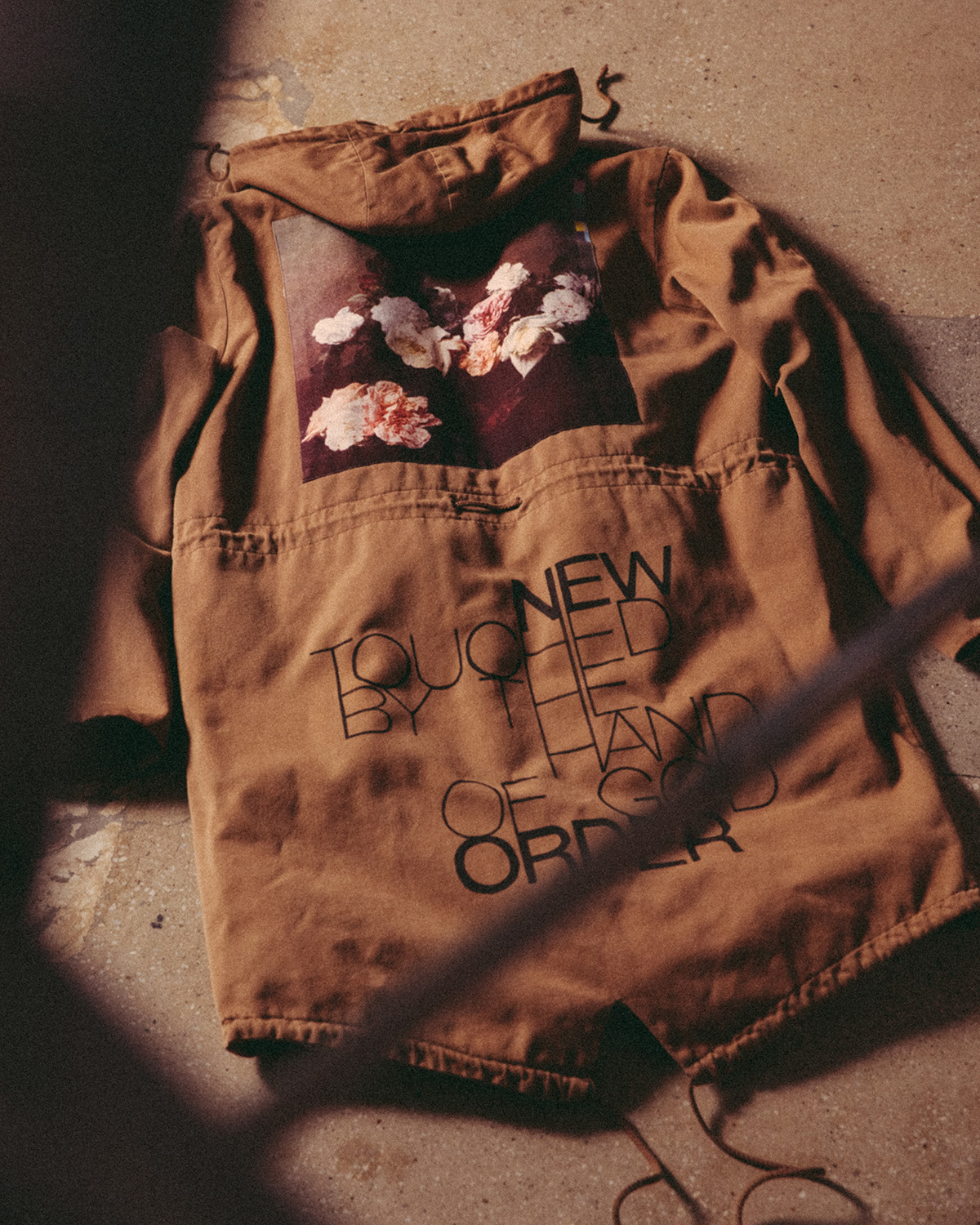



Along with two of menswear’s great fashion designers, the Massimo-Osti-founded brands Stone Island and C.P. Company were adding their expertise in fabric to the style at a similar time. Items such as Stoney’s Ice Camo AW90 coat or its ’90s heat-reactive parkas will set you back a few thousand on the second-hand market today, iconic pieces that the brand continues to reference today.
Outside of Europe, hip-hop was also pushing the American military staple into the forefront.
“Nineties New York hip-hop was wearing an M-65, but in the winter, they would get the parkas,” says Pantoja, going on to say: “In the late nineties and early 2000s, there was Baby Phat, Sean John, J.Lo’s brand Sweetface… when they made a parka they were literally taking influence from the N-3B.”
Through the combined efforts of high fashion designers, notorious British subcultures, and ’90s hip-hop culture, the parka coat has reached its current status as a staple winter coat that transcends the unpredictable world of trends.
David Keyte’s brand Universal Works has created a parka every winter in its 15-year history and he aptly sums up the unique appeal of the coat: “It’s one of those garments that has an endless lifespan. Plus, with a direct lineage to Inuits, it’s quite an interesting tale, isn’t it?”
Shop Parka Coats
This post was originally published on this site be sure to check out more of their content.




